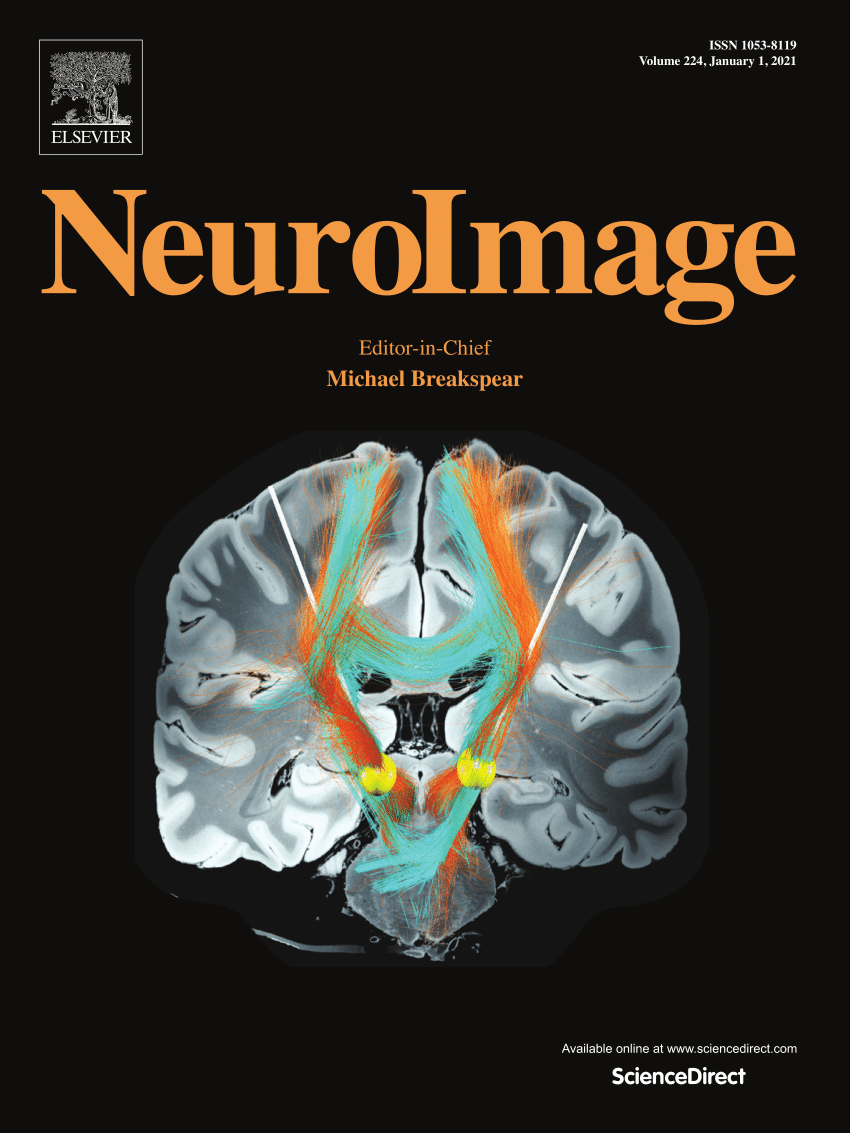表征异质性成分分析(ReDisCA)。
IF 4.7
2区 医学
Q1 NEUROIMAGING
引用次数: 0
摘要
表征相似性分析(RSA)原理认为,神经表征反映了编码信息的结构,允许探索大脑信息处理的空间和时间组织。由于建模复杂和几何/解剖数据不足,传统的 RSA 应用于脑电图或 MEG 数据时,在获取脑源水平的激活时间序列方面面临挑战。为了解决这个问题,我们引入了表征异质性成分分析(ReDisCA),这是一种估算与目标表征异质性矩阵(RDM)对齐的脑电图或 MEG 反应中的空间-时间成分的方法。ReDisCA 可生成信息丰富的空间滤波器和相关拓扑图,有助于深入了解 "表征相关 "源的位置。将 ReDisCA 应用于诱发反应时间序列时,可产生具有所需 RDM 的时间源激活剖面图。重要的是,虽然 ReDisCA 不需要反建模,但其输出结果与脑电图和 MEG 观察方程一致,可用作严格的源定位程序的输入。通过模拟和与传统方法的比较,我们展示了 ReDisCA 的功效,显示了卓越的源定位精度,并将该方法应用于真实的 EEG 和 MEG 数据集,揭示了生理上合理的表征结构,而无需反建模。ReDisCA 是独立成分分析法(Makeig,1995 年)、空间谱分解法(Nikulin,2011 年)和源功率调制法(Dähne,2014 年)等无逆建模方法系列的补充,这些方法旨在从 EEG 或 MEG 数据中提取具有所需属性的信号源。除 EEG 和 MEG 分析外,ReDisCA 还可应用于 fMRI 数据分析和探索多层人工神经网络中出现的表征结构。本文章由计算机程序翻译,如有差异,请以英文原文为准。
Representational dissimilarity component analysis (ReDisCA)
The principle of Representational Similarity Analysis (RSA) posits that neural representations reflect the structure of encoded information, allowing exploration of spatial and temporal organization of brain information processing. Traditional RSA when applied to EEG or MEG data faces challenges in accessing activation time series at the brain source level due to modeling complexities and insufficient geometric/anatomical data.
To overcome this, we introduce Representational Dissimilarity Component Analysis (ReDisCA), a method for estimating spatial–temporal components in EEG or MEG responses aligned with a target representational dissimilarity matrix (RDM). ReDisCA yields informative spatial filters and associated topographies, offering insights into the location of ”representationally relevant” sources. Applied to evoked response time series, ReDisCA produces temporal source activation profiles with the desired RDM. Importantly, while ReDisCA does not require inverse modeling its output is consistent with EEG and MEG observation equation and can be used as an input to rigorous source localization procedures.
Demonstrating ReDisCA’s efficacy through simulations and comparison with conventional methods, we show superior source localization accuracy and apply the method to real EEG and MEG datasets, revealing physiologically plausible representational structures without inverse modeling. ReDisCA adds to the family of inverse modeling free methods such as independent component analysis (Makeig, 1995), Spatial spectral decomposition (Nikulin, 2011), and Source power comodulation (Dähne, 2014) designed for extraction sources with desired properties from EEG or MEG data. Extending its utility beyond EEG and MEG analysis, ReDisCA is likely to find application in fMRI data analysis and exploration of representational structures emerging in multilayered artificial neural networks.
求助全文
通过发布文献求助,成功后即可免费获取论文全文。
去求助
来源期刊

NeuroImage
医学-核医学
CiteScore
11.30
自引率
10.50%
发文量
809
审稿时长
63 days
期刊介绍:
NeuroImage, a Journal of Brain Function provides a vehicle for communicating important advances in acquiring, analyzing, and modelling neuroimaging data and in applying these techniques to the study of structure-function and brain-behavior relationships. Though the emphasis is on the macroscopic level of human brain organization, meso-and microscopic neuroimaging across all species will be considered if informative for understanding the aforementioned relationships.
 求助内容:
求助内容: 应助结果提醒方式:
应助结果提醒方式:


